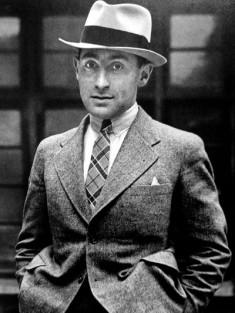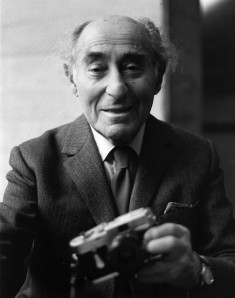| Alfred Eisenstaedt | |
|---|---|
 |
|
| Photographer | |
| Born | Dec. 6, 1898 Dirschau (Tczew), West Prussia, Imperial Germany |
| Died | Aug. 24, 1995 (at age 96) Oak Bluffs, Massachusetts |
| Nationality | German |
Alfred Eisenstaedt was a photographer of Jewish, German, and American descent. He survived Adolf Hitler’s attack on the Jews to become one of the most renowned photographers of his time. His work had been featured on the front page of LIFE Magazine over 90 times and he toured the world on over 2500 assignments.
Early Years
Alfred Eisenstaedt was born in Dirschau, which is located in West Prussia, in 1898 to parents Joseph and Regina. At the age of eight, he moved with his parents and his two brothers to the city of Berlin where they lived until the rise of the Third Reich.
Alfred’s father was a trader and Alfred probably would have followed in his footsteps had his uncle not given him a camera at the age of 14. This was when Alfred’s love of photography was born. Like the other boys his age, he served in the German Army at the age of 17.
Focus on Photography
On April 9, 1918, Eisenstaedt suffered a shrapnel injury to his legs. He was sent home to recover, and he spent one year recovering. This break gave him a chance to focus on photography. He attended museums to study techniques of composition and light. In 1922, he became a belt-and-button salesperson, saving cash in order to purchase photographic equipment.
While on a vacation in Czechoslovakia in 1927, Eisenstaedt photographed a lady as she was playing tennis. He took the photo from the hillside that was approximately 50 yards away from the woman, and it captured her shadow. The photo was then sold to Der Welt Spiegel four years later for 3 marks, the equivalent of $12. It was then that Alfred decided to quit his job and devote himself to photography.
Photography Career Highlights
 Eisenstaedt was very successful and became a full-time photographer in 1929. He started working as a freelancer for Pacific and Atlantic Photos. Eisenstaedt’s assignments were diverse, including portraits of prominent political figures and different social events.
Eisenstaedt was very successful and became a full-time photographer in 1929. He started working as a freelancer for Pacific and Atlantic Photos. Eisenstaedt’s assignments were diverse, including portraits of prominent political figures and different social events.
In 1933, he travelled to Italy to capture the very first meeting of Adolf Hitler and Benito Mussolini, which he shot from a few yards away. Two years after Hitler became president, Eisenstaedt immigrated to America.
Eisenstaedt and Project X
Shortly after relocating to the U.S., Henry Luce, the founder of Time magazine, hired Eisenstaedt alongside Margaret Bourke-White, Peter Stackpolea, and Thomas McAvoy for the project known as Project X. This project hit the stands for the very first time in 1936.
At LIFE, he was nicknamed Eisie by his colleagues. The second edition of the magazine featured his photo of West Point on the front cover. Eisenstaedt’s other assignments included photos of America’s resurgence from the Great Depression which he took across the country.
Eisenstaedt’s Later Years
As varied and disparate as Alfred Eisenstaedt’s photos are, all of these photographs are unified by his constantly fresh eye as well as talent for capturing important events in human experience.
Until his death in 1995 at the age of 96, he was still shooting photos and adding to his inventory of more than 100,000 negatives in his office at LIFE magazine. He was granted a number of awards including ICP Master of Photography and the Presidential Medal of Arts.